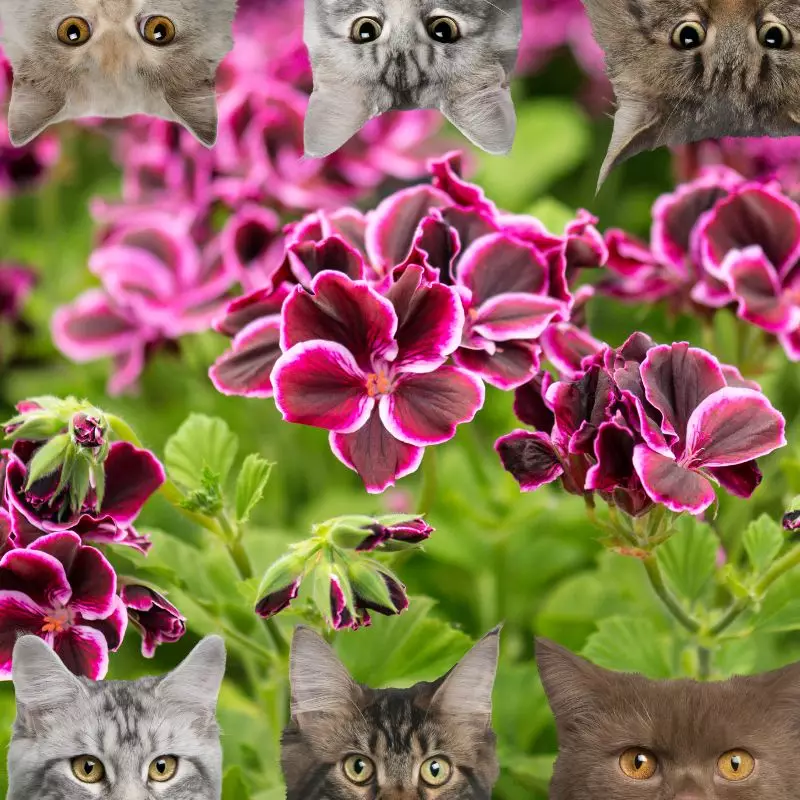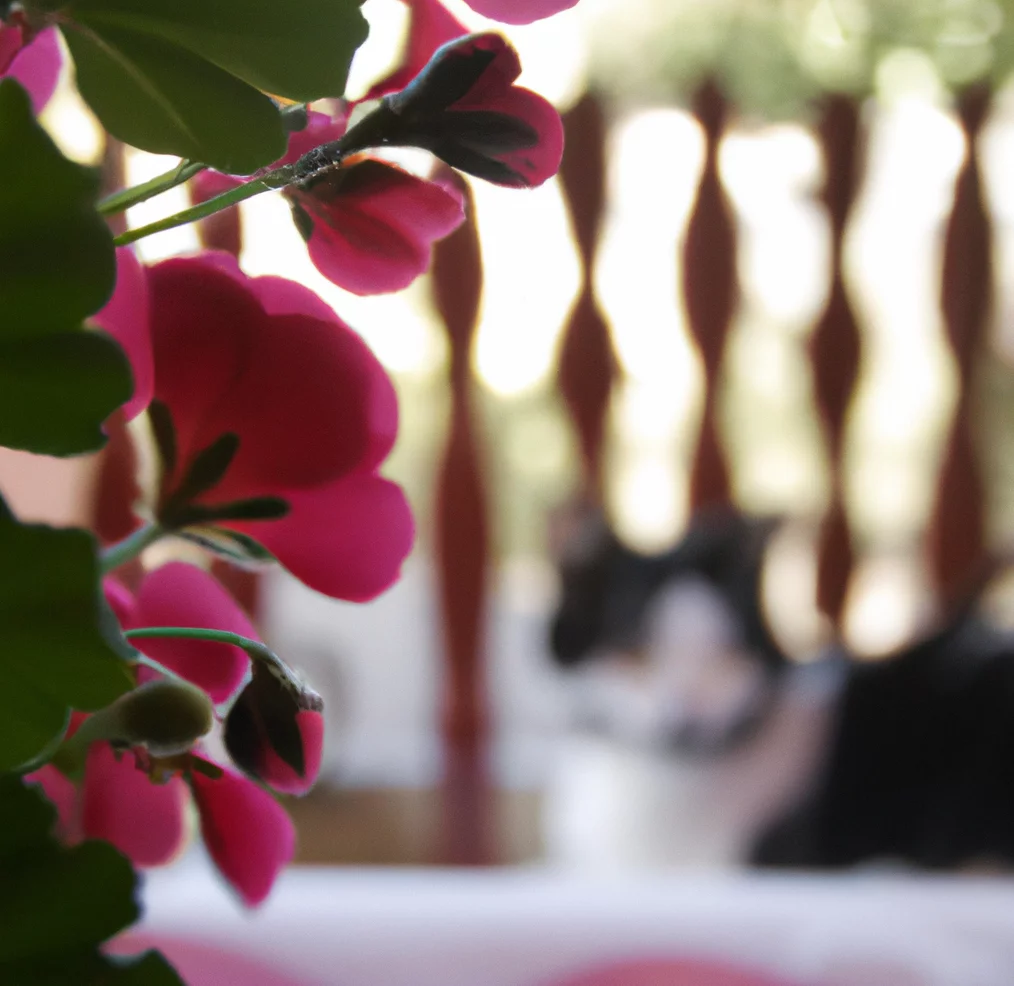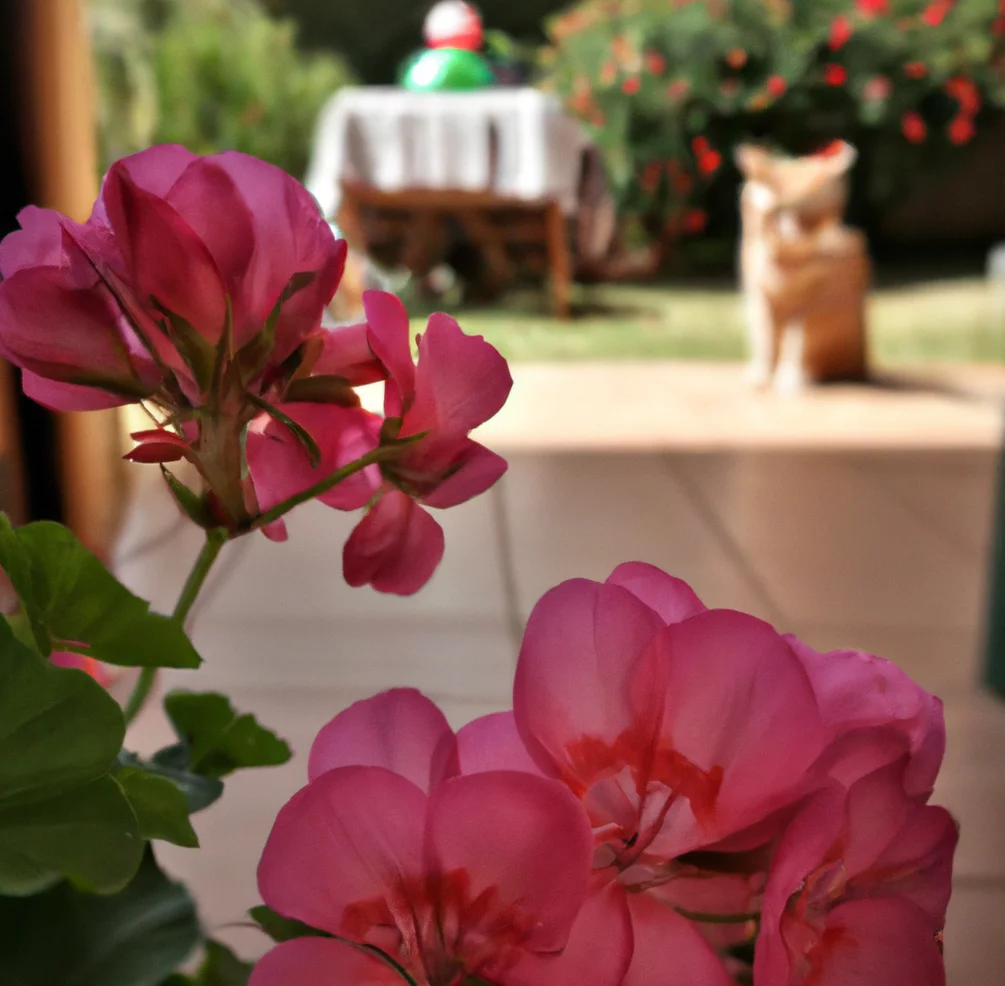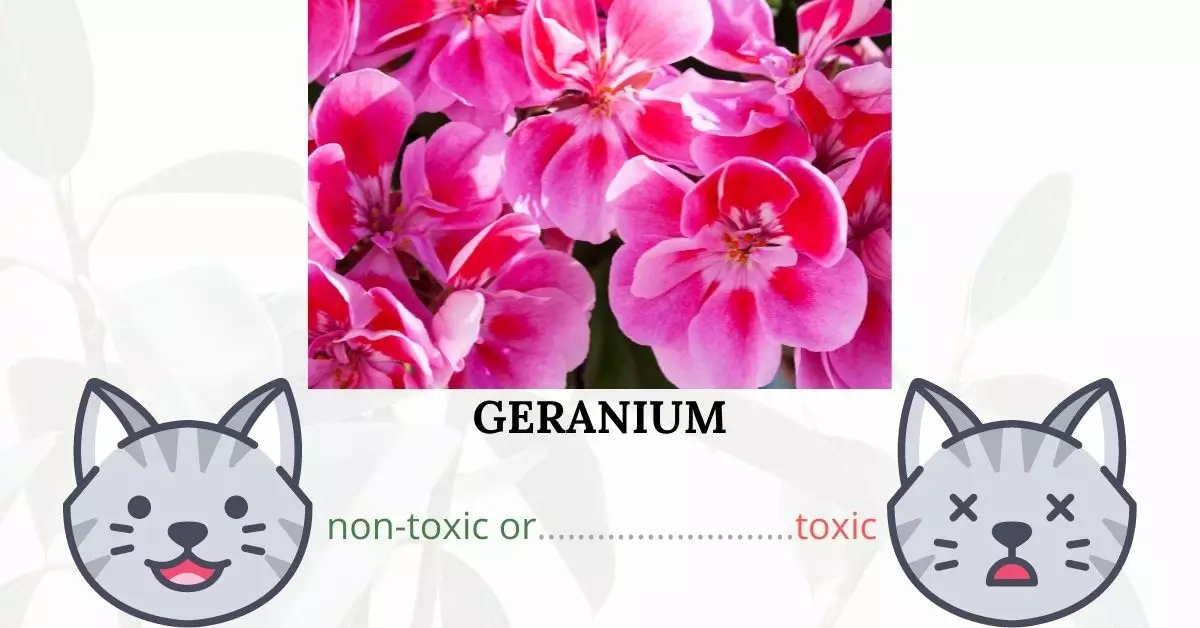Geraniums, often found in gardens, are indeed toxic to cats.
To provide the most accurate and up-to-date information regarding the potential risks of Geraniums and their effects on cats, this article has been written in collaboration with a team of experienced DVMs (doctors of veterinary medicine). Our comprehensive research includes references from high-authority websites such as the ASPCA and PetMD.
The toxic components in geraniums are primarily linalool and geraniol. Geraniol, an acyclic monoterpene alcohol, is present not only in geraniums but also in plants like thyme, lemon balm, coriander, and palmarosa. Its rose-like scent has earned it a place in many beauty products and insecticides. However, in both humans and animals, geraniol can lead to allergic dermatitis. Linalool, another terpene alcohol, can be found in lavender, bergamot, thyme, coriander, basil, and neroli. In cats, exposure to plants containing linalool, like geraniums, can result in symptoms such as ataxia, depression, vomiting, and diarrhea.
Clinical Signs of Geranium or Pelargonium Poisoning in Cats

When cats come into contact with, ingest, or even just inhale the scent from a Geranium or Pelargonium plant, they can manifest a range of symptoms due to the toxic components present in the plant, mainly linalool and geraniol. Here are the clinical signs to watch for and their explanations:
- Vomiting: One of the primary reactions, it is the body’s way of expelling the toxic substances it has ingested. The ingestion of geraniums can irritate the cat’s gastrointestinal tract leading to this symptom.
- Depression: The toxins can affect the cat’s central nervous system, causing them to appear listless, lethargic, or unresponsive. It’s the body’s general response to feeling unwell.
- Diarrhea: Just like vomiting, diarrhea is another way the body tries to get rid of ingested toxins. The irritation in the gastrointestinal tract can lead to increased bowel movements.
- Ataxia: This is a loss of coordination in the cat. It may appear as if the cat is drunk or having difficulty walking. The toxins present in geraniums can affect the neurological system of the cat, leading to this motor disturbance.
- Anorexia and Appetite Loss: The discomfort and general malaise caused by the poisoning can lead to a decreased appetite. Cats might refuse to eat due to the gastrointestinal upset or the nauseous feeling after ingesting the toxic plant.
- Dermatitis: If a cat comes into direct skin contact with the plant, it might develop skin irritations. Geraniol, found in the geranium plant, is known to induce allergic dermatitis in both humans and animals. The skin might appear red, swollen, or itchy.
It’s important to monitor your cat if you believe it has come into contact with a geranium plant and seek veterinary care immediately if any of these symptoms are observed.
First Aid and Treatment of Geranium or Pelargonium Poisoning in Cats

Cats suffering from geranium poisoning are treated by removing the plant from the feline to avoid further intake and removing the toxins from the cat’s system. An emetic medicine will be given to stimulate the cat to vomit in order to expel the undigested poison from its stomach. The veterinarian may also prescribe activated charcoal. Toxic compounds in the digestive tract will bond to activated charcoal, which will prevent absorption. Intravenous fluids may be used to help the cat regain his or her hydration. The vet may also give other medications as needed by your cat.
Recovery from Geranium or Pelargonium Poisoning in Cats

The outcome for geranium poisoning in cats ranges from fair to excellent, and it is highly dependent on the amount of plant material consumed. If the cat has stopped consuming any more of the toxic plant material, he or she will most likely recover in about 24 hours. As with all cases of plant toxicity, the sooner the feline is admitted to the veterinary facility, the better the chances are that she or he will heal completely.
Prevention of Geranium or Pelargonium Poisoning in Cats
Getting rid of your geraniums at home is a must to prevent your cats from exposure. You may opt to plant other cat-friendly plants that your cat can graze on. If your neighbors have geraniums in their yards, make sure that your cat stirs away from going into the area. You can also limit your cat’s access outdoors by confining them in a cat house or by installing fences and safety nets around your house.
If you love plants but have cats at home, check out these lists:





